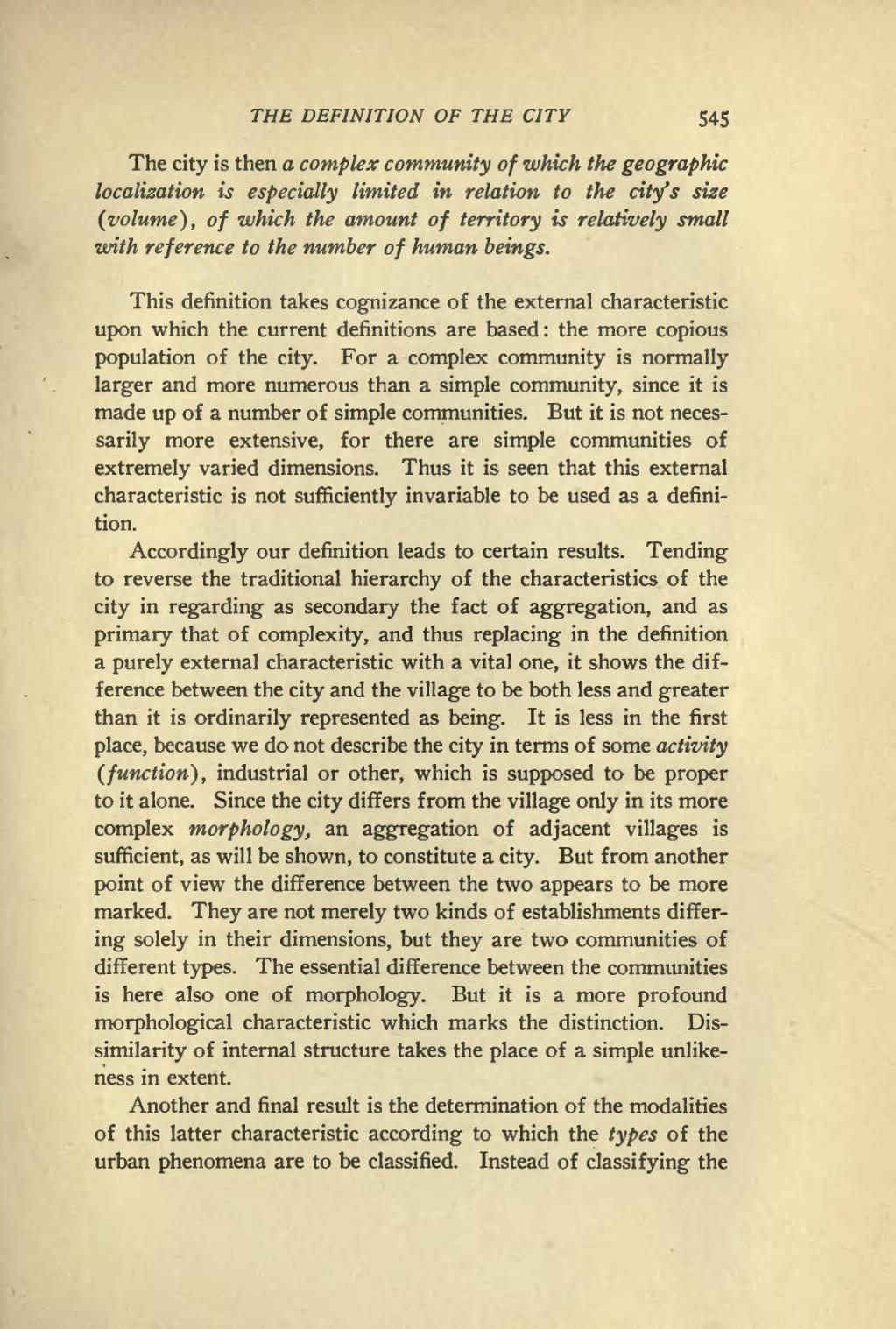THE DEFINITION OF THE CITY 545
The city is then a complex community of which the geographic localisation is especially limited in relation to the city's size (volume), of which the amount of territory is relatively small with reference to the number of human beings.
This definition takes cognizance of the external characteristic upon which the current definitions are based: the more copious population of the city. For a complex community is normally larger and more numerous than a simple community, since it is made up of a number of simple communities. But it is not neces- sarily more extensive, for there are simple communities of extremely varied dimensions. Thus it is seen that this external characteristic is not sufficiently invariable to be used as a defini- tion.
Accordingly our definition leads to certain results. Tending to reverse the traditional hierarchy of the characteristics of the city in regarding as secondary the fact of aggregation, and as primary that of complexity, and thus replacing in the definition a purely external characteristic with a vital one, it shows the dif- ference between the city and the village to be both less and greater than it is ordinarily represented as being. It is less in the first place, because we do not describe the city in terms of some activity (function), industrial or other, which is supposed to be proper to it alone. Since the city differs from the village only in its more complex morphology, an aggregation of adjacent villages is sufficient, as will be shown, to constitute a city. But from another point of view the difference between the two appears to be more marked. They are not merely two kinds of establishments differ- ing solely in their dimensions, but they are two communities of different types. The essential difference between the communities is here also one of morphology. But it is a more profound morphological characteristic which marks the distinction. Dis- similarity of internal structure takes the place of a simple unlike- ness in extent.
Another and final result is the determination of the modalities of this latter characteristic according to which the types of the urban phenomena are to be classified. Instead of classifying the
